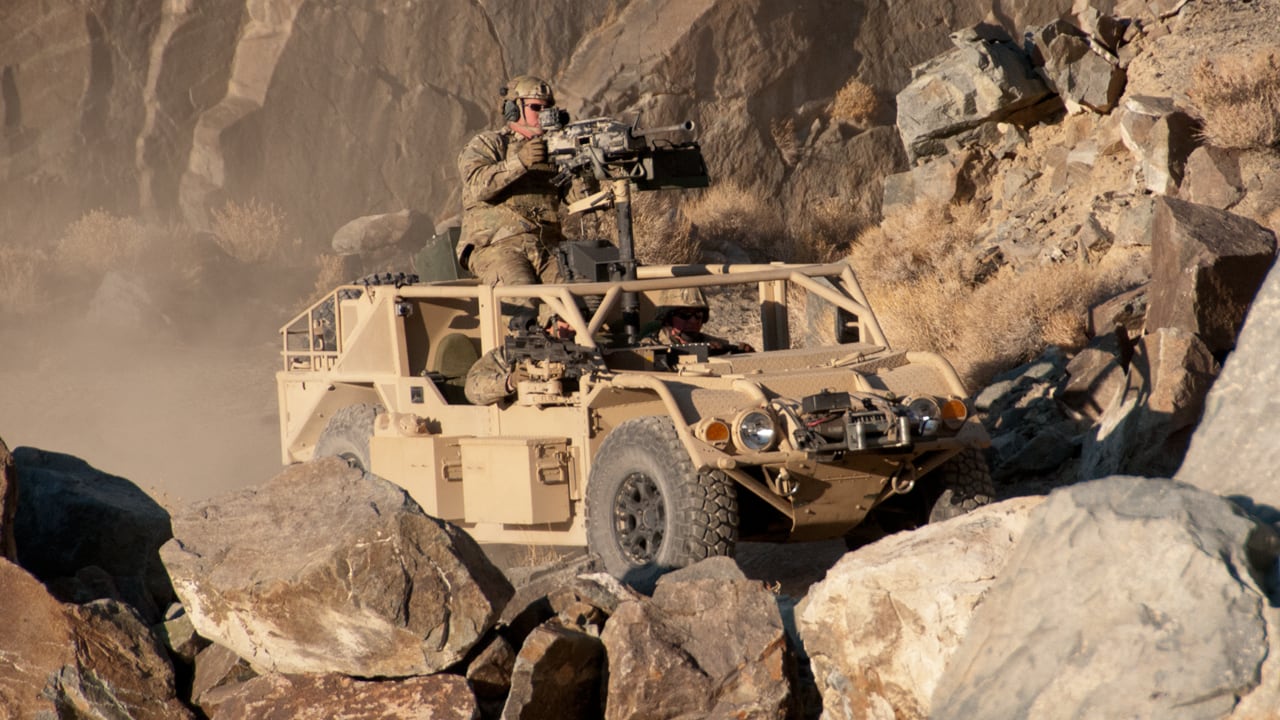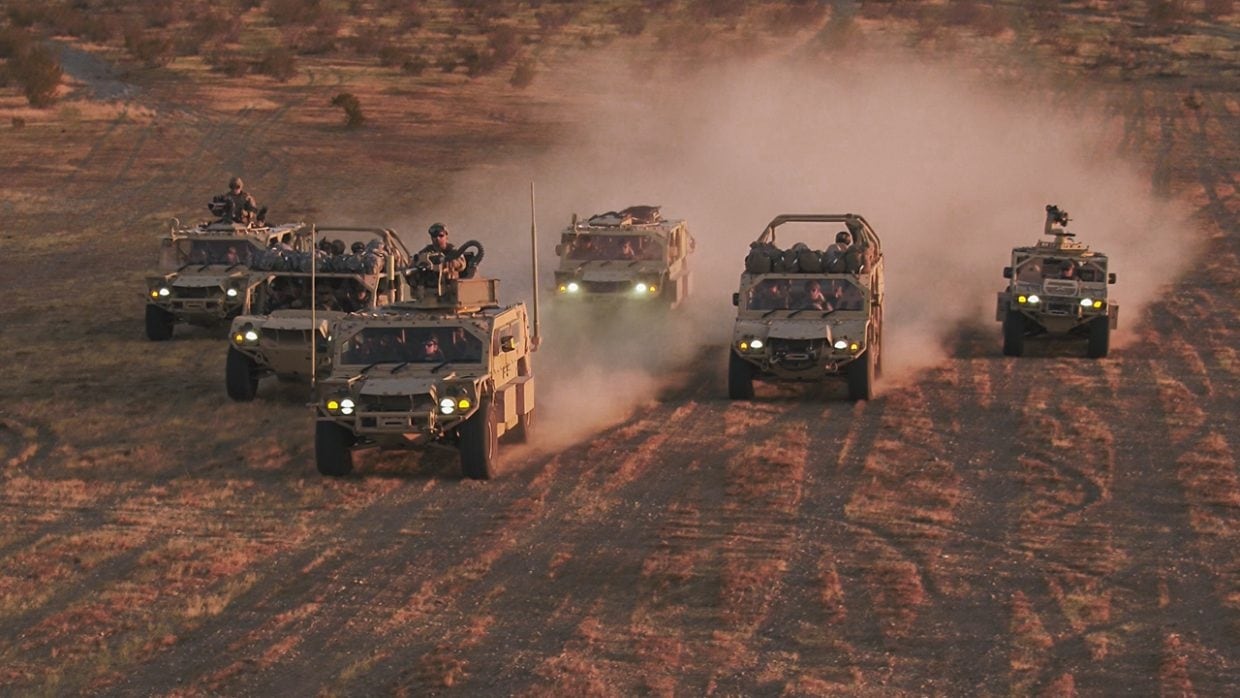WASHINGTON — The U.S. Army has picked an Oshkosh Defense and Flyer Defense LLC team, an SAIC and Polaris team, and GM Defense to competitively build Infantry Squad Vehicles intended to provide ground mobility for infantry brigade combat teams.
Each industrial choice was awarded an OTA, or other transaction authority, task assignment under the National Advanced Mobility Consortium to deliver and test two prototypes each, said Steve Herrick, ground mobility vehicle product lead with the Army’s Program Executive Office Combat Support & Combat Service Support, in a statement sent to Defense News.
OTA is a congressionally authorized contracting mechanism meant to expedite prototyping efforts.
The three received $1 million to build the vehicles and it’s expected that the Army will take delivery of the prototypes on Nov. 13 at Aberdeen Test Center, Maryland.
The prototypes will be evaluated in various performance, operational and characteristics tests through the end of the year and will then be transported to Fort Bragg, North Carolina, in January to be assessed by soldiers, Herrick said.
Each industrial choice is expected to simultaneously deliver information to the Army on price, production and logistics.
The Army will choose one vehicle for production in the second quarter of fiscal 2020 based on soldier feedback and response to a formal request for proposals leading to production.
The Army Requirements Oversight Council approved an Army procurement object for 649 Infantry Squad Vehicles with an objective requirement of 2,065 ISVs in February.
The ISV is intended to supplement and potentially replace vehicles the Army procured as version 1.1 of the Ground Mobility Vehicle.
The ISV “is additive” to infantry brigade combat teams “and currently not planned as a replacement for current vehicles in the formation,” according to Herrick.
RELATED

Oshkosh and Flyer, in a way, represent the incumbent, as Flyer produced the GMV 1.1. vehicle currently fielded. Flyer Defense “is the design authority” and will lead the team in building the prototypes, according to a statement from the team.
GM Defense’s ISV is based on its Chevrolet Colorado midsize truck and its ZR2 and ZR2 Bison variants, according to a company statement, “supplemented with both custom and commercially available parts proven by Chevy performance engineering in more than 10,000 miles of punishing off-road development and desert racing in the Best of the Desert Racing series.”
The SAIC-Polaris team is submitting the DAGOR vehicle, which “delivers off-road mobility while meeting the squad’s payload demands, all within the weight and size restrictions that maximize tactical air transportability,” according to Jed Leonard, vice president of Polaris Government and Defense.
The DAGOR ISV “will leverage and further enhance the already proven, production-ready solution that has been tested, certified and fielded to operational units in the U.S. Military and its Allies since 2015,” Leonard added.
The prototype competition is a significant step toward a solution after years of uncertainty; the Army seemed geared toward holding a rapid competition to buy a GMV in 2016, but the plan was delayed without much explanation in favor of buying an interim vehicle already in use by special operations forces.
RELATED

Buying the GMV was a top priority following the fall 2015 release of the Army’s Combat Vehicle Modernization Strategy, which called for such a vehicle in future and current operations.
But when a competition never materialized, rumors swirled that the Army might buy more of U.S. Special Operations Command’s GMVs — General Dynamics Ordnance and Tactical Systems’ Flyer 72 — even after the service had spent several years testing a wide variety of commercial off-the-shelf options.
The Army bought quantities of the command’s vehicle for five airborne infantry brigade combat teams.
Congress spurred the effort in its FY18 defense policy bill, mandating the Army hold a competition and move forward with a program.
PEO CS&CSS’ product lead for the GMV stated on its website that the Army planned to pursue a competition for the GMV — calling it an ISV — as a formal program of record late last year.
The office also released a market survey asking for a vehicle that provides mobility for a nine-soldier infantry squad as well as associated equipment to “move around the close battle area.” The vehicle should be lightweight, highly mobile and transportable “by all means” to include CH-47 Chinook cargo helicopters, UH-60 Black Hawk utility helicopters, and via low-velocity airdrop.
Jen Judson is an award-winning journalist covering land warfare for Defense News. She has also worked for Politico and Inside Defense. She holds a Master of Science degree in journalism from Boston University and a Bachelor of Arts degree from Kenyon College.







